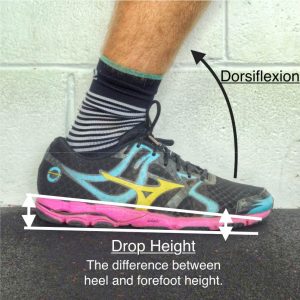Running shoe selection is important, we can all agree on that front. Any runner should have a keen interest in what wraps their feet, starting with the understanding that there’s no such thing as a good or bad, only suitable and not suitable.
First of all, let’s make note of the elephant in the room; why is a Chiropractor talking about running shoes? The style of Chiropractic that I enjoy practicing is based on musculoskeletal injuries, in particular, lower limb and running related injuries, rehab and prehab. This might be different to treatment you have received in the past but it’s important for you to know that as a Chiropractor I’m trained in musculoskeletal diagnosis, treatment and rehab of the entire body. Therefore I’m not only interested in the spine, but also how the limbs are working individually as well as collectively with the spine.
Back to the shoes! There are a multitude of variables that are present in the design and manufacture of a shoe, much like there are a multitude of variables that are present in an individual’s body. That’s why it’s important to consider all the particular ranges of motion, strengths, weaknesses, congenital abnormalities, previous injuries and running conditions of a person before recommending a particular shoe. Hence there are a number of variables that could impact the individuals’ particular set of traits in either a positive or negative way.
It’s important to remember that the body has an incredible ability to compensate in ways to get things done no matter what’s on your feet. However, compensations made by the body are designed as a short-term fix, not a long-term habit. At the end of the day if you had the choice would you not prefer to get a shoe that’s actually suited to your particular traits?
Let’s take a closer look at this in the form of a simple case. Imagine you are due for a new pair of shoes and your old shoes had a drop differential (heel to forefoot height difference) of 10mm. Now you are looking for a new pair of shoes and your ‘friend’ has told you about these great shoes that he has been wearing that have zero drop. So you decide to scout out a pair of zero drop shoes.
New shoe day! But there’s a problem. Let’s say you have a limitation in the desired range of dorsiflexion at the ankle (toes towards shin). This may be due to a tissue extensibility problem (increase in muscle tone of the calves) or a bony restriction in this motion from a congenital abnormality, or an arthritic change, just to list a few.
The issue with this is that by decreasing the stack height of the ankle you have now taken away a significant advantage for your lack of dorsiflexion. The body has to make this range up somewhere else so now it may look to pronate the foot and internally rotate the tibia in order to gain a few more degrees of range. Therefore, what was a well-managed dorsiflexion restriction problem with no injury complaints has turned into an excessively pronated foot which is causing stress at the knee.
Let’s imagine then that this friend is watching you run one day and states something like, “mate you are rolling your ankle in heaps, you probably need some arch support.” Can you see how this has gone from a situation where a certain feature of a shoe was allowing injury free movement, and has now snowballed, developing into a multitude of perceived problems that can be put down to a few poor footwear choices that compounded each other?
This is why it’s important to find a shoe that is suited to YOU. This is why testimonials are not a good method for deciding on running footwear. If you have been happy in a previous shoe, make sure that when the time comes for an update, you are replacing that shoe with one that has similar traits. If you are having ongoing issues it might be time to seek advice from someone who can screen you to determine where your blindspots are and then give you a recommendation for a trained shoe fitter.

